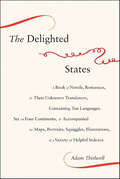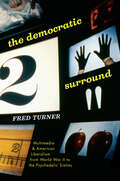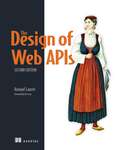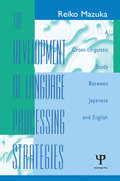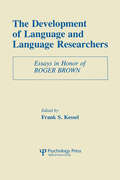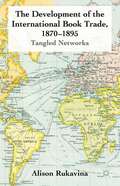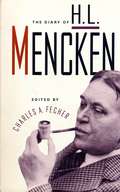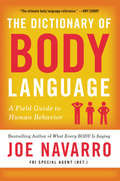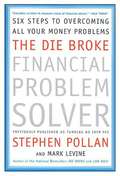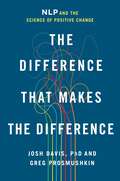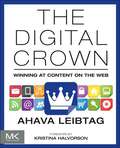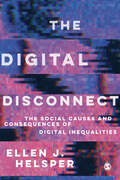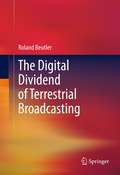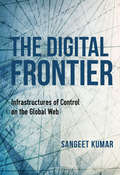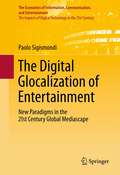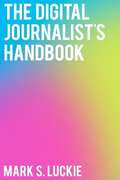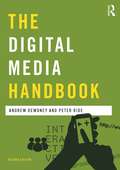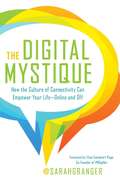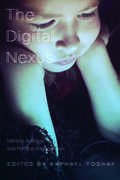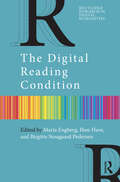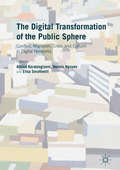- Table View
- List View
The Delighted States
by Adam ThirlwellHaving slept with a prostitute in Egypt, a young French novelist named Gustave Flaubert at last abandons sentimentality and begins to write. He influences the obscure French writer Édouard Dujardin, who is read by James Joyce on the train to Trieste, where he will teach English to the Italian novelist Italo Svevo. Back in Paris, Joyce asks Svevo to deliver a suitcase containing notes for Ulysses, a novel that will be viscerated by the expat Gertrude Stein, whose first published story is based on one by Flaubert.This carousel of influence shows how translation and emigration lead to a new and true history of the novel. We devour novels in translation while believing that style does not translate. But the history of the novel is the history of style. The Delighted States attempts to solve this conundrum while mapping an imaginary country, a country of readers: the Delighted States.This book is a provocation, a box of tricks, a bedside travel book; it is also a work of startling intelligence and originality from one of our finest young writers.
The Democratic Surround: Multimedia & American Liberalism from World War II to the Psychedelic Sixties
by Fred TurnerWe commonly think of the psychedelic sixties as an explosion of creative energy and freedom that arose in direct revolt against the social restraint and authoritarian hierarchy of the early Cold War years. Yet, as Fred Turner reveals in The Democratic Surround, the decades that brought us the Korean War and communist witch hunts also witnessed an extraordinary turn toward explicitly democratic, open, and inclusive ideas of communication and with them new, flexible models of social order. Surprisingly, he shows that it was this turn that brought us the revolutionary multimedia and wild-eyed individualism of the 1960s counterculture. In this prequel to his celebrated book From Counterculture to Cyberculture, Turner rewrites the history of postwar America, showing how in the 1940s and '50s American liberalism offered a far more radical social vision than we now remember. Turner tracks the influential mid-century entwining of Bauhaus aesthetics with American social science and psychology. From the Museum of Modern Art in New York to the New Bauhaus in Chicago and Black Mountain College in North Carolina, Turner shows how some of the most well-known artists and intellectuals of the forties developed new models of media, new theories of interpersonal and international collaboration, and new visions of an open, tolerant, and democratic self in direct contrast to the repression and conformity associated with the fascist and communist movements. He then shows how their work shaped some of the most significant media events of the Cold War, including Edward Steichen's Family of Man exhibition, the multimedia performances of John Cage, and, ultimately, the psychedelic Be-Ins of the sixties. Turner demonstrates that by the end of the 1950s this vision of the democratic self and the media built to promote it would actually become part of the mainstream, even shaping American propaganda efforts in Europe. Overturning common misconceptions of these transformational years, The Democratic Surround shows just how much the artistic and social radicalism of the sixties owed to the liberal ideals of Cold War America, a democratic vision that still underlies our hopes for digital media today.
The Design of Web APIs, Second Edition
by Arnaud LauretLearn how to design web APIs that are a delight to use and maintain.Thousands of developers have followed renowned API expert Arnaud Lauret&’s guidance to create APIs that are flexible, secure, and easily integrated. This new edition of the bestselling The Design of Web APIs covers the latest updates to the OpenAPI standard, teaches you to streamline and standardize API design decisions with rationale and automation, and gives you insights you can apply to other API styles, such as gRPC. You&’ll quickly see how a well-designed and properly-documented API gives your users autonomy—and saves you from constant explanations and hand-holding. This fully revised second edition of The Design of Web APIs teaches you the principles and techniques you need to design easy-to-consume public and private web APIs. In it, you&’ll learn how to: • Analyze requirements to identify API capabilities for versatile, reusable designs • Create HTTP-based REST APIs with CRUD, batch/bulk, or long operations • Design interoperable, user-friendly APIs with seamless operations and data flow • Ensure secure, efficient APIs while overcoming limitations and constraints • Modify APIs without breaking compatibility, evaluating consequences carefully • Future-proof your APIs and choose effective versioning strategies • Document REST APIs using OpenAPI and JSON Schema for seamless implementation • Streamline and standardize API design decisions with rationale and automation The Design of Web APIs, Second Edition teaches vital skills for gathering requirements, balancing business and technical goals and constraints, and adopting a consumer-first mindset. Each chapter is packed full of hands-on examples, including designing an Online Shopping API and user-friendly banking operations, and over seventy exercises to help your new skills stick. Plus, you&’ll explore paradigms applicable beyond REST APIs, and fully describe and document your APIs with OpenAPI and JSON Schema. Your web APIs will soon be easier to consume and your clients—internal and external—will be happier than ever! About the technology Web APIs open up your software to developers, exposing features, and capabilities to other programs. Well-designed web APIs are a joy. The bad ones are a nightmare, with endless impact on system performance, developer productivity, and end-user experience. This book shows you how to design APIs your fellow developers will love to use. About the book The Design of Web APIs, Second Edition teaches you to design efficient and adaptable REST APIs. This revised and rewritten second edition contains the latest updates to the OpenAPI standard, along with insights you can apply to other API styles such as GraphQL. Learn vital skills for gathering requirements, creating easy-to-consume public and private web APIs, and handling non-backward compatible modifications and versioning. What's inside • Design reusable, user-friendly and interoperable APIs • Document your APIs with OpenAPI and JSON Schema • Create secure and efficient APIs by design • Streamline and standardize API design decisions About the reader Written for developers with experience building and consuming APIs. About the author Arnaud Lauret runs the API Handyman blog and is a frequent speaker at API conferences. He currently works as an API Industry Researcher at Postman. Table of Contents 1 What is API design? Part 1 2 Identifying API capabilities 3 Observing operations from the REST angle 4 Representing operations with HTTP 5 Modeling data 6 Describing HTTP operations with OpenAPI 7 Describing data with JSON Schema in OpenAPI Part 2 8 Designing user-friendly, interoperable data 9 Designing user-friend
The Development of Language Processing Strategies: A Cross-linguistic Study Between Japanese and English
by Reiko MazukaEver since the notion of explanatory adequacy was promoted by Chomsky in his 1965 Aspects, linguists and psycholinguists have been in pursuit of a psychologically valid theory of grammar. To be explanatorily adequate, a theory of grammar can not only describe the general characteristics of a language but can also account for the underlying psychological processes of acquiring and processing that language. To be considered psychologically valid, a grammar must be learnable by ordinary children (the problem of acquisition) and must generate sentences that are parsable by ordinary people (the problem of processing). Ultimately, the fields of language acquisition and processing are concerned with the same goal: to build a theory that accounts for grammar as it is acquired by children; accessed in comprehension and production of speech; and represented within the human mind. Unfortunately, these two fields developed independently and have rarely been well-informed about each other's concerns. Both have experienced past difficulties as a result. Recently, new models have been developed with full consideration to cross-linguistic diversity. Gone are many of the basic assumptions of conventional models, and in their place a variety of innovative and more flexible assumptions have emerged. However, in their attempt to address cross-linguistic issues, these processing models have yet to fully address the developmental challenge: How can a child without a stable grammar process language and still manage to acquire new grammar? This book attempts to develop a model of language processing that addresses both cross-linguistic and developmental challenges. It proposes to link the setting of a basic configurational parameter during language acquisition to the different organization of processing strategies in left- and right-branching languages. Based primarily on Mazuka's doctoral dissertation, this volume incorporates various responses to the original proposal as well as the author's responses to the comments.
The Development of Language and Language Researchers: Essays in Honor of Roger Brown
by Frank S. KesselFirst published in 1988. This is a collection of essays that were presented at or generated afterwards at a meeting on language acquisition Society Development in April 1981: a symposium on “The Development of Language and Language Researchers: Whatever Happened to Linguistic Theory?” in Boston.
The Development of the International Book Trade, 1870–1895
by By Alison RukavinaAn international trade emerged between 1870-1895 that incorporated the circulation of books among countries worldwide. A history of the social network and select agents who sold and distributed books overseas, this study demonstrates agents increasingly thought of the world as a negotiable, connected system and books as transnational commodities.
The Diary of H. L. Mencken
by Charles A. FecherA Historical Treasure: the never-before, published diary of the most outspoken, iconoclastic, ferociously articulate of American social critics -- the sui generis newspaperman, columnist for the Baltimore Sun, editor of The American Mercury, and author of The American Language, who was admired, feared, and famous for his merciless puncturing of smugness, his genius for deflating pomposity and pretense, his polemical brilliance. Walter Lippmann called him, in 1926, "the most powerful personal influence on this whole generation of educated Americans." H. L. Mencken's diary was, at his own request, kept sealed in the vaults of Baltimore's Enoch Pratt Library for a quarter of a century after his death. The diary covers the years 1930 -- 1948, and provides a vivid, unvarnished, sometimes shocking picture of Mencken himself, his world, and his friends and antagonists, from Theodore Dreiser, F. Scott Fitzgerald, Sinclair Lewis, and William Faulkner to Franklin D. Roosevelt, for whom Mencken nourished a hatred that resulted in spectacular and celebrated feats of invective. From the more than 2,000 pages of typescript that have now come to light, the Mencken scholar Charles A. Fecher has made a generous selection of entries carefully chosen to preserve the whole range, color, and impact of the diary. Here, full scale, is Mencken the unique observer and disturber of American society. And here too is Mencken the human being of wildly contradictory impulses: the skeptic who was prey to small superstitions, the dare-all warrior who was a hopeless hypochondriac, the loving husband and generous friend who was, alas, a bigot. Mencken emerges from these pages unretouched -- in all the often outrageous gadfly vitality that made him, at his brilliant best, so important to the intellectual fabric of American life.
The Dictionary of Body Language: A Field Guide to Human Behavior
by Joe NavarroFrom the world’s #1 body language expert* comes the essential book for decoding human behavior Joe Navarro has spent a lifetime observing others. For 25 years, as a Special Agent for the FBI, he conducted and supervised interrogations of spies and other dangerous criminals, honing his mastery of nonverbal communication. After retiring from the bureau, he has become a sought-after public speaker and consultant, and an internationally bestselling author. Now, a decade after his groundbreaking book What Every BODY is Saying, Navarro returns with his most ambitious work yet. The Dictionary of Body Language is a pioneering “field guide” to nonverbal communication, describing and explaining the more than 400 behaviors that will allow you to gauge anyone’s true intentions.Moving from the head down to the feet, Navarro reveals the hidden meanings behind the many conscious and subconscious things we do. Readers will learn how to tell a person’s actual feelings from subtle changes in their pupils; the lip behaviors that betray concerns or hidden information; the many different varieties of arm posturing, and what each one means; how the position of our thumbs when we stand akimbo reflects our mental state; and many other fascinating insights to help you both read others and change their perceptions of you.Readers will turn to The Dictionary Body Language again and again—a body language bible for anyone looking to understand what their boss really means, interpret whether a potential romantic partner is interested or not, and learn how to put themselves forward in the most favorable light.*GlobalGurus.com
The Die Broke Financial Problem Solver
by Stephen M. Pollan Mark LevineIf you're loosing sleep over your financial worries, help is here at last.Whether you're fretting over a mortgage that's been denied; a loan that's delayed; a marriage settlement that seems unfair; or a business that's struggling, this extraordinary book will not only help you rest easy, it will show you how to turn adversity into success. Here you'll learn the Pollan method for turning no into yes: how to determine your problem; how to make sure you're dealing with only one problem at a time; and how to create an environment of trust. With literally hundreds of scenarios to illustrate it's success, this unique and practical method will make you feel like you've got a coach, strategist, and motivator at your beck and call -- and will help you sleep well, knowing you're on the way to getting what you want.
The Difference That Makes the Difference: NLP and the Science of Positive Change
by Josh Davis Greg ProsmushkinTake control of your life and create profound change today using NLP and the science of positive change! Learn why people resist change, why they sometimes embrace change, and how to lead change quickly and in lasting ways. It all comes down to finding the difference that makes the difference for each person and context. Neurolinguistic Programming (NLP) is great for finding that difference. NLP helps us understand what makes people tick. When we understand how they think, feel, and act in key situations, we have the raw material with which to make change happen, often quickly and profoundly.In the 1970s, a linguist and his partner studied the language patterns and nonverbal cues of great psychotherapists, as well as how people are affected by the systems they’re part of. The two pinpointed key aspects of what enables human beings to change. Their findings formed the basis of NLP. Since then, NLP has often been taught to therapists and life coaches aiming to master one-on-one interactions in those contexts.When the lawyer Greg Prosmushkin discovered NLP, he realized how incredibly valuable these tools could be outside a therapy context. How to communicate with confidence, model excellence, and influence your own and others’ thoughts, feelings, and behaviors are useful for many people in many situations. Greg used NLP to make huge breakthroughs in his trials and to step into his own as an entrepreneur. In 2022, Greg met Josh Davis, PhD, a Columbia University PhD who studied psychology and neuroscience, and the Founder and Director of the Science-Based Leadership Institute. Josh is an NLP expert who grew up in the 1970s and 80s as the child of two pioneers in the field of NLP. He’s an NLP native. He’s been training others to use NLP for over a decade. Josh is also the internationally best-selling author of Two Awesome Hours, a science-based set of strategies to work less and get your most important work done. Greg and Josh set out to make NLP easily accessible for everyone. They show how the tools of NLP can be used by anyone in their daily work and personal lives, and connect these actionable tools to the science of change. The Difference that Makes the Difference is a result of their rigorous and dedicated collaboration.In this book, readers learn how to:-Communicate with confidence-Model excellence, to learn and master new skills-Influence their own and others’ thoughts, feelings, and behaviors in positive ways-and much more!You’ll get:-Step-by-step instructions with tips-Guided prompts to follow that help you apply these time-tested tools to your own specific needs -Examples of how to use the tools in everyday situations-Simple explanations of the theory and science behind the tools-Clear explanations of why the tools are so powerful NLP has been time-tested for fifty years, but until now it has only been accessible for a select few. Books and methods of teaching NLP were complex because the subject matter was highly sophisticated and derived from the work of professional psychotherapists. Greg Prosmushkin and Josh Davis, PhD have spent a combined 35+ years studying and unlocking the value of NLP. Josh has been teaching these concepts and tools in specialized NLP trainings, as well as one-on-one and group coaching settings, to Fortune 500 audiences and beyond. They have been using these concepts and tools in their professional practices of trial law, entrepreneurship, and leadership development. They have made a careful study of how to make the complex simple to learn and apply. It’s time to move past simply waiting and wishing for your life to be different―dive into the tools of NLP and the science behind change that supports those tools, to make a real impact in your life, right now.
The Digital Crown: Winning at Content on the Web
by Ahava LeibtagThe Digital Crown walks you through the essentials of crafting great content: the fundamentals of branding, messaging, business goal alignment, and creating portable, mobile content that is future-ready. Systems create freedom, and within this book you’ll learn the seven critical rules to align your internal and external content processes, including putting your audience first, involving stakeholders early and often, and creating multidisciplinary content teams.
The Digital Disconnect: The Social Causes and Consequences of Digital Inequalities
by Ellen HelsperWith the increased digitisation of society comes an increased concern about who is left behind. From societal causes to the impact of everyday actions, The Digital Disconnect explores the relationship between digital and social inequalities, and the lived consequences of digitisation. Ellen Helsper goes beyond questions of digital divides and who is connected. She asks why and how social and digital inequalities are linked and shows the tangible outcomes of socio-digital inequalities in everyday lives. The book: Introduces the key theories and concepts needed to understand both ‘traditional’ and digital inequalities research. Investigates a range of socio-digital inequalities, from digital access and skills, to civic participation, social engagement, and everyday content creation and consumption. Brings research to life with a range of qualitative vignettes, drawing out the personal experiences that lay at the heart of global socio-digital inequalities. The Digital Disconnect is an expert exploration of contemporary theory, research and practice in socio-digital inequalities. It is also an urgent and impassioned call to broaden horizons, expand theoretical and methodological toolkits, and work collectively to help achieve a fairer digital future for all. Ellen J. Helsper is Professor of Digital Inequalities at the Department of Media and Communications at London School of Economics and Political Science.
The Digital Disconnect: The Social Causes and Consequences of Digital Inequalities
by Ellen HelsperWith the increased digitisation of society comes an increased concern about who is left behind. From societal causes to the impact of everyday actions, The Digital Disconnect explores the relationship between digital and social inequalities, and the lived consequences of digitisation. Ellen Helsper goes beyond questions of digital divides and who is connected. She asks why and how social and digital inequalities are linked and shows the tangible outcomes of socio-digital inequalities in everyday lives. The book: Introduces the key theories and concepts needed to understand both ‘traditional’ and digital inequalities research. Investigates a range of socio-digital inequalities, from digital access and skills, to civic participation, social engagement, and everyday content creation and consumption. Brings research to life with a range of qualitative vignettes, drawing out the personal experiences that lay at the heart of global socio-digital inequalities. The Digital Disconnect is an expert exploration of contemporary theory, research and practice in socio-digital inequalities. It is also an urgent and impassioned call to broaden horizons, expand theoretical and methodological toolkits, and work collectively to help achieve a fairer digital future for all. Ellen J. Helsper is Professor of Digital Inequalities at the Department of Media and Communications at London School of Economics and Political Science.
The Digital Dividend of Terrestrial Broadcasting
by Roland BeutlerThe "digital revolution" of the last two decades has pervaded innumerable aspects of our daily lives and changed our planet irreversibly. The shift from analog to digital broadcasting has facilitated a seemingly infinite variety of new applications--audience interactivity being but one example. The greater efficiency and compression of digital media have endowed broadcasters with a "digital dividend" of spare transmission capacity over and above the requirements of terrestrial broadcasting. The question is, who will use it, and how? Comparing the European experience with that of broadcasters elsewhere in the world, the author sketches the current status of international frequency management, quantifies the value of the "dividend" itself, analyzes the details of the analog-to-digital switchovers already completed, and posits what the future holds for the sector. As we grapple with new devices, inconceivable a mere generation ago, that allow us to access digital media instantly, anywhere and at any time of day, this book is a potent reminder that what we have witnessed so far may be just the first wavering steps along a road whose destination we can only guess at.
The Digital Frontier: Infrastructures of Control on the Global Web (Framing the Global)
by Sangeet KumarThe global web and its digital ecosystem can be seen as tools of emancipation, communication, and spreading knowledge or as means of control, fueled by capitalism, surveillance, and geopolitics.The Digital Frontier interrogates the world wide web and the digital ecosystem it has spawned to reveal how their conventions, protocols, standards, and algorithmic regulations represent a novel form of global power. Sangeet Kumar shows the operation of this power through the web's "infrastructures of control" visible at sites where the universalizing imperatives of the web run up against local values, norms, and cultures. These include how the idea of the "global common good" is used as a ruse by digital oligopolies to expand their private enclosures, how seemingly collaborative spaces can simultaneously be exclusionary as they regulate legitimate knowledge, how selfhood is being redefined online along Eurocentric ideals, and how the web's political challenge is felt differentially by sovereign nation states. In analyzing this new modality of cultural power in the global digital ecosystem, The Digital Frontier is an important read for scholars, activists, academics and students inspired by the utopian dream of a truly representative global digital network.
The Digital Glocalization of Entertainment
by Paolo SigismondiIn this volume, Paolo Sigismondi explores the dynamics of global media and entertainment, specifically analyzing the implications of the global rise of non-scripted entertainment (as reality TV programs) and the impact and consequences of the Information and Communication Technology (ICT) revolution on the content, delivery platforms, and overall business models of the media and entertainment landscape. This work aims at bridging the gap between media theories and industry practices in a rapidly evolving global mediascape, building on scholarship in the field and enriched by case studies and insights from business practice. This work demonstrates that the paradigms of the landscape are shifting, introducing the digital "glocalization" of entertainment, through which successful media crossing national and cultural borders incorporate both global and local features. Key questions raised include: Is the ICT revolution an example of disruptive technology for the global media and entertainment industry? Is the existing status quo challenged, and in, particular Hollywood's global leadership? What are the global entities emerging as Hollywood's main competitors in this technologically evolving landscape? Sigismondi argues that as new players are entering the field, new threats to Hollywood's dominance are emerging. The global leaders in non-scripted entertainment, for example, are European-based global entities operating outside the Hollywood system. Meanwhile, the ICT revolution is modifying the contours and boundaries of the global mediascape. Sigismondi's approach provides unique insight into how the forces of technology and globalization are transforming television, cinema, and online entertainment.
The Digital Humanities
by Gardiner, Eileen and Musto, Ronald G. Eileen Gardiner Ronald G. MustoThe Digital Humanities is a comprehensive introduction and practical guide to how humanists use the digital to conduct research, organize materials, analyze, and publish findings. It summarizes the turn toward the digital that is reinventing every aspect of the humanities among scholars, libraries, publishers, administrators, and the public. Beginning with some definitions and a brief historical survey of the humanities, the book examines how humanists work, what they study, and how humanists and their research have been impacted by the digital and how, in turn, they shape it. It surveys digital humanities tools and their functions, the digital humanists' environments, and the outcomes and reception of their work. The book pays particular attention to both theoretical underpinnings and practical considerations for embarking on digital humanities projects. It places the digital humanities firmly within the historical traditions of the humanities and in the contexts of current academic and scholarly life.
The Digital Journalist's Handbook
by Mark S. LuckieThe Digital Journalist's Handbook is your guide to the tools you need to know to thrive in today's digital newsroom. This unique how-to book provides simple explanations of complex technologies and provides examples of how journalists can incorporate them into their stories and reporting. The Handbook is composed of 12 chapters, each dedicated to a different tool in the digital journalist's toolbox. Chapters include "Writing for the Web," "Blogging," "Photography," "Audio," "Audio Slideshows," "Video," "Web Design," "Social Networking," "Data Visualization," and "Flash," as well as a glossary with definitions of more than 130 technical terms and phrases commonly used in digital journalism. The Handbook is also fully illustrated and contains diagrams and guidelines of everything from the layout of a typical blog to the features found on a digital audio recorder. In addition, each chapter includes links to online resources, tutorials, and examples of every technology mentioned in the book. The Digital Journalist's Handbook is a must-read for both novice digital journalists and tech-savvy experts.
The Digital Literary Sphere: Reading, Writing, and Selling Books in the Internet Era
by Simone MurrayHow has the Internet changed literary culture?2nd Place, N. Katherine Hayles Award for Criticism of Electronic Literature by The Electronic Literature OrganizationReports of the book’s death have been greatly exaggerated. Books are flourishing in the Internet era—widely discussed and reviewed in online readers’ forums and publicized through book trailers and author blog tours. But over the past twenty-five years, digital media platforms have undeniably transformed book culture. Since Amazon’s founding in 1994, the whole way in which books are created, marketed, publicized, sold, reviewed, showcased, consumed, and commented upon has changed dramatically. The digital literary sphere is no mere appendage to the world of print—it is where literary reputations are made, movements are born, and readers passionately engage with their favorite works and authors.In The Digital Literary Sphere, Simone Murray considers the contemporary book world from multiple viewpoints. By examining reader engagement with the online personas of Margaret Atwood, John Green, Gary Shteyngart, David Foster Wallace, Karl Ove Knausgaard, and even Jonathan Franzen, among others, Murray reveals the dynamic interrelationship of print and digital technologies. Drawing on approaches from literary studies, media and cultural studies, book history, cultural policy, and the digital humanities, this book asks: What is the significance of authors communicating directly to readers via social media? How does digital media reframe the "live" author-reader encounter? And does the growing army of reader-reviewers signal an overdue democratizing of literary culture or the atomizing of cultural authority? In exploring these questions, The Digital Literary Sphere takes stock of epochal changes in the book industry while probing books’ and digital media’s complex contemporary coexistence.
The Digital Media Handbook (Media Practice)
by Andrew Dewdney Peter RideThe new edition of The Digital Media Handbook presents an essential guide to the historical and theoretical development of digital media, emphasising cultural continuity alongside technological change, and highlighting the emergence of new forms of communication in contemporary networked culture. Andrew Dewdney and Peter Ride present detailed critical commentary and descriptive historical accounts, as well as a series of interviews from a range of digital media practitioners, including producers, developers, curators and artists. The Digital Media Handbook highlights key concerns of today’s practitioners, analysing how they develop projects, interact and solve problems within the context of networked communication. The Digital Media Handbook includes: Essays on the history and theory of digital media Essays on contemporary issues and debates Interviews with digital media professionals A glossary of technical acronyms and key terms.
The Digital Mystique
by Sarah GrangerIn The Digital Mystique, Sarah Granger-a nationally recognized expert on online culture and social technology-shows us how digital media is shaping our lives in real time. Whether it's how we raise our children, communicate in love and partnerships, support causes, or establish friendships and trust, Granger pinpoints the best ways to seize digital opportunities to make our lives richer and fuller.While the Internet era is one that is frequently criticized as undermining our health, privacy, concentration, and ability to sustain real-world relationships, Granger takes a more optimistic and empowering view. She shares real-life stories and surprising facts about our lives-both online and off-to shed new and fascinating light on the positive effects of the digital media revolution, showing us how we can personally learn, grow, and thrive by engaging in our digitized world.The Digital Mystique includes the following chapters:Connecting Is Just the Beginning.YOUFriending Is TrendingLove in the Time of MessagingThe Kids Are OnlineThe Senior MomentThe Passion of the WebThere's No Business Like E-BusinessCommunity Is the KeyThe Difference a Tweet MakesWhat We Leave BehindA Stitch in Digital Time
The Digital Nexus: Identity, Agency, and Political Engagement
by Raphael FoshayOver half a century ago, in The Gutenberg Galaxy (1962), Marshall McLuhan noted that the overlap of traditional print and new electronic media like radio and television produced widespread upheaval in personal and public life: Even without collision, such co-existence of technologies and awareness brings trauma and tension to every living person. Our most ordinary and conventional attitudes seem suddenly twisted into gargoyles and grotesques. Familiar institutions and associations seem at times menacing and malignant. These multiple transformations, which are the normal consequence of introducing new media into any society whatever, need special study. The trauma and tension in the daily lives of citizens as described here by McLuhan was only intensified by the arrival of digital media and the Web in the following decades. The rapidly evolving digital realm held a powerful promise for creative and constructive good—a promise so alluring that much of the inquiry into this new environment focused on its potential rather than its profound impact on every sphere of civic, commercial, and private life. The totalizing scope of the combined effects of computerization and the worldwide network are the subject of the essays in The Digital Nexus, a volume that responds to McLuhan’s request for a “special study” of the tsunami-like transformation of the communication landscape. These critical excursions provide analysis of and insight into the way new media technologies change the workings of social engagement for personal expression, social interaction, and political engagement. The contributors investigate the terms and conditions under which our digital society is unfolding and provide compelling arguments for the need to develop an accurate grasp of the architecture of the Web and the challenges that ubiquitous connectivity undoubtedly delivers to both public and private life. Contributions by Ian Angus, Maria Bakardjieva, Daryl Campbell, Sharone Daniel, Andrew Feenberg, Raphael Foshay, Carolyn Guertin, David J. Gunkel, Bob Hanke, Leslie Lindballe, Mark McCutcheon, Roman Onufrijchuk, Josipa G. Petrunić, Peter J. Smith, Lorna Stefanick, Karen Wall.
The Digital Reading Condition
by Iben Have Birgitte Stougaard Pedersen Maria EngbergThis volume offers a critical overview of digital reading practices and scholarly efforts to analyze and understand reading in the mediatized landscape. Building on research about digital reading, born-digital literature, and digital audiobooks, The Digital Reading Condition explores reading as part of a broader cultural shift encompassing many forms of media and genres. Bringing together research from media and literary studies, digital humanities, scholarship on reading and learning, as well as sensory studies and research on multimodal and multisensory media reception, the authors address and challenge print-biased conceptions of reading that are still prevalent in research, whether the reading medium is print or digital. They argue that the act of reading itself is changing, and rather than rejecting digital media as unsuitable for sustained or focused reading practices, they argue that the complex media landscape challenges us to rethink how to define reading as a mediated practice. Presenting a truly interdisciplinary perspective on digital reading practices, this volume will appeal to scholars and graduate students in communication, media studies, new media and technology, literature, digital humanities, literacy studies, composition, and rhetoric.
The Digital Transformation of the Automotive Industry: Catalysts, Roadmap, Practice
by Uwe WinkelhakeThis book provides comprehensive and pragmatic recommendations for action for the automotive and supplier industry, which has been changing ever more rapidly in recent years. China has developed into the leading market for e-mobility and for the use of autonomous robotaxis, AI and data. The established manufacturers have to change much more quickly based on clear objectives in order not to lose touch and to still be able to achieve the Paris climate goals. The industry is changing comprehensively from a vehicle-focused to a mobility-oriented business model. More and more processes, even entire business areas, will run automatically based on AI and new technologies will change sales and aftersales structures. More and more data is being created, which also enables new, profitable products. The switch to e-vehicles with an appropriate charging environment, the use of mobility services instead of car ownership, climate-neutral production and the circular economy must be addressed more quickly. The third edition of the book provides complete information on the digital transformations that are still absolutely necessary and taking into account the latest developments revised edition comprehensive and pragmatic answers to current questions: How should new technologies be used in a structured manner and where will AI lead to significant changes? How should the transformation be approached and with what key topics? The outlook beyond 2040 at the end of the book has been expanded and the expected changes in the world of work are considered, especially from an AI perspective. Regarding the digital transformations that are still absolutely necessary and taking into account the latest developments, the book, now in its third completely revised edition, provides comprehensive and pragmatic answers to current questions: How should new technologies be used in a structured manner and where will AI lead to significant changes? How should the transformation be approached and with what key topics? The outlook beyond 2040 at the end of the book has been expanded and the expected changes in the world of work are considered, especially from an AI perspective.
The Digital Transformation of the Public Sphere
by Athina Karatzogianni Dennis Nguyen Elisa SerafinelliBringing together contributions from the fields of sociology, media and cultural studies, arts, politics, science and technology studies, political communication theory and popular culture studies, this volume engages both with theoretical debates and detailed empirical studies, showcasing how the public sphere is transformed by digital media, and in turn how this digital public sphere shapes and is shaped by debates surrounding crisis, conflict, migration and culture. Case studies from Bulgaria, Nigeria, China, Greece, Italy, Cyprus, UK, Mexico and India are discussed in detail.
